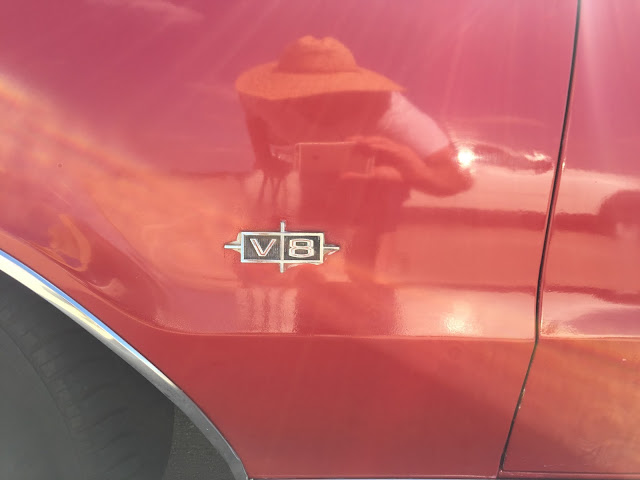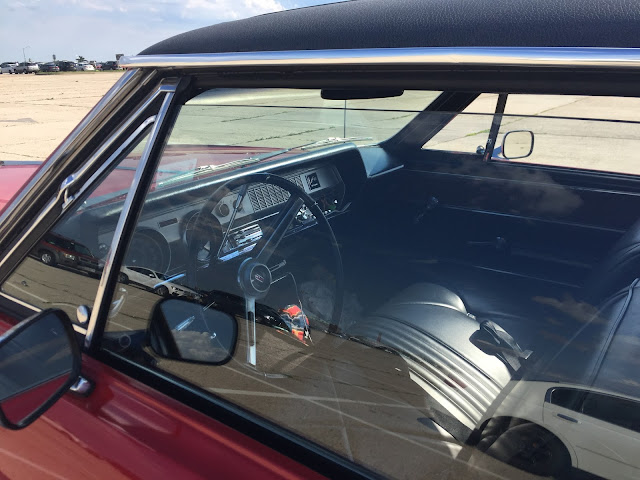F FOR FANTASTIC, 85 FOR THE TEMPERATURE
I was lucky enough to find myself out at Jacob Riis Park in the Rockaways recently for some beach time when I spotted a glint of hot fire in the distance:
Yes! Roosting next to those poseur cars trying to share some limelight is a 1966 Oldsmobile F85 Holiday Coupe in Target Red. This car is 51 years old but looks like it just came from the dealership.
The F85 was the base trim level of the Cutlass line in '66. Above this ride were the Cutlass and Cutlass Supreme in the hierarchy (the 442 was still an option package and wouldn't be its own model until 1968).
This was considered an intermediate car as the full size rides of this year were truly colossal.
I love this generation which is very similar to the '67 442 I had. The sharp fender edges continuing on the bumpers looks mean.
I love this generation which is very similar to the '67 442 I had. The sharp fender edges continuing on the bumpers looks mean.
In 1967 the headlights were spaced slightly apart with the turn signal nestled between each set in a barbell design. From this angle you can see the chrome hood trim is more of a blade than a hood ornament.
This was the most beautiful setting for such a ride. If I find myself needing to sell a car in the future I'm bringing it here to snap pics.
This was the most beautiful setting for such a ride. If I find myself needing to sell a car in the future I'm bringing it here to snap pics.
The hardtops such as this ride were known as the Holiday Coupe. If it had a pillar between the front and rear side glass it would be the Sport. The overall look is mid-'60s clean with the only side trim being down along the rocker panels and lower quarter.
This little emblem tells us the engine is the awesomely named Jetfire Rocket 330 V8. When I was a kid my favorite Transformer was Jetfire! The base engine choice was the Action Line 250 straight 6 cylinder. When equipped with an automatic transmission it was the Jetaway 2 speed. Gotta love those marketing names of the '60s rides!
While the dash and general layout are the same as the 442 there's a bench seat filling up the cabin. A column shift Jetaway auto trans is visible as is a radio. No air conditioning means these black seats will tear the skin off your legs on a Summer day if you're wearing shorts.
f-85!
There is the slightest separation on the vinyl roof otherwise this car is absolutely perfect! The matte finish on the rear bumper makes me believe it's a recent replacement.
Each letter of OLDSMOBILE gets its own square! The reverse lights are subtle, small rectangles flanking the license plate. 1967 would bring a much different taillight pattern with 2 squares on the body and 2 square set into the bumper itself.
The rear window is set deep into those sail panels for the first time this year. Other GM coupes such as the Tempest/Le Mans/GTO sported this look as well.
Well there we have it; a smashing ride on a smashing day. Whoever drove this to the beach is the winner of the Kicking the Most Ass in Summer award. The only thing that would make it better is if it were a convertible. I loved my 442 with its bucket seats but really; if you're going to shuttle the crew somewhere in cruising fashion those big bench seats rule.


























































